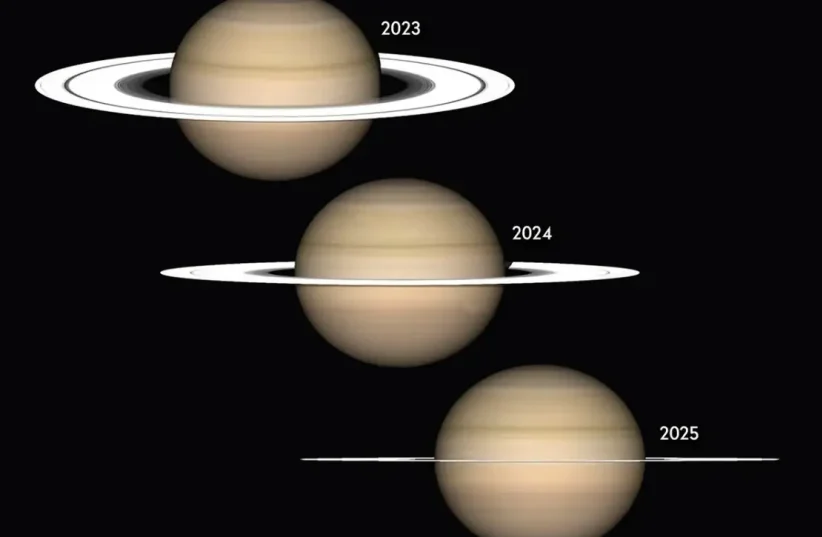Saturn's distinct rings, closely associated with the planet, will soon vanish from sight. Astronomers and amateur stargazers have only 18 months remaining to witness the spectacle.
Although the rings will still be present, they will be obscured from Earth due to the tilt of Saturn in its orbit around the Sun. This intriguing phenomenon, explained by the scientific website iflscience, occurs when Saturn's rings align with our line of sight, rendering them invisible to the human eye.
You may find this puzzling, considering the vast size of these rings. Even if we focus solely on the brightest and most prominent rings, they span an area of 70,000 to 140,000 kilometers – equivalent to 30 times the size of Earth.
So how can they simply disappear?
Despite their immense size, they are astonishingly thin, even thinner than a sheet of paper. Most portions are less than 100 meters thick. From a distance of over 1.2 billion kilometers, one kilometer is practically imperceptible.
During August, when Saturn reached opposition (a state where two astronomical bodies appear 180° apart), the tilt angle measured approximately 9 degrees. By March 23, 2025, this angle will decrease to 0. This occurrence repeats at intervals ranging from 13.7 to 15.7 years, resulting from Earth crossing the plane of the rings.
Rest assured, the rings will not vanish forever. The lower portion, concealed from our view for many years, will become visible, along with the planet's south pole. The rings will showcase their maximum inclination in 2032, when they display a stunning 27-degree angle relative to us.
The change in inclination is not a new phenomenon and has been extensively photographed over the past few decades. This presents a wonderful opportunity to observe Saturn's moons and gain a unique perspective of the planet. We have the privilege of this spectacle until the phenomenon reoccurs on October 15, 2038.
